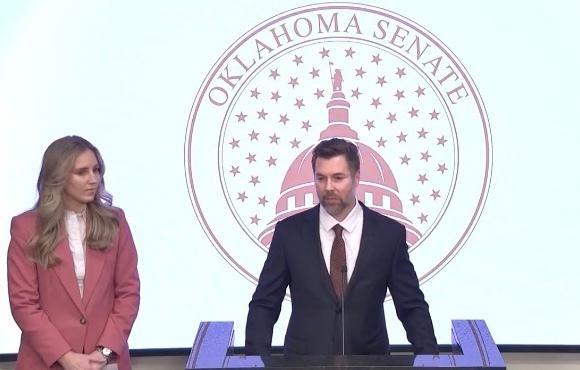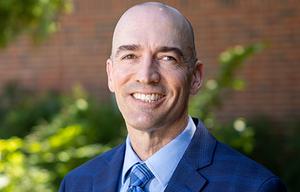
Education
Senate Education Committee leaders seek longer school year, other reforms
Ray Carter | January 28, 2025
The leaders of the Senate Education Committee have unveiled a wide range of bills that would address problems in Oklahoma's K-12 and college-education systems.
The proposed agenda includes lengthening the school year in Oklahoma to meet national norms, moving school-board elections to boost public input, and eliminating “diversity, equity, and inclusion” (DEI) programs on college campuses.
“With this package of legislation, we are laying the foundation for a stronger, more effective education system for all Oklahomans,” said state Sen. Adam Pugh, an Edmond Republican who chairs the Senate Education Committee.
“This plan is a bold step forward that will build on the progress we’ve already made in improving education every step of the way from kindergarten through college,” said state Sen. Ally Seifried, R-Claremore
More Time in the Classroom
The Senate Education agenda includes Senate Bill 409, by Pugh, which would require that an additional day of classroom instruction be added for every $25 million increase in state appropriations for public schools.
“The United States has fallen behind both our allies and our enemies when it comes to the amount of time that our students spend in a classroom and in school,” Pugh said. “On average, the western world spends over 200 days a year in school. Some of our allies go to school year-round, only taking small breaks throughout the year. On average, the United States student spends 179 days in a public school. Oklahoma is at the bottom of that list. We, on average, spend 165 days in school.”
The situation is even worse than that statistic indicates because many Oklahoma districts include prescheduled “virtual” or “distance learning” days in the 165 total. Those virtual days have been roundly criticized for involving little actual instruction or student-teacher interaction.
Only 6 percent of voters turned out, on average, for the April 2, 2024, school-board elections in Oklahoma.
Pugh noted that SB 409 would add a week of school for every $125 million increase provided in state funding.
“I have spoken with parents. I have spoken with school leaders,” Pugh said. “They recognize that our kids need to be in a classroom more.”
Moving School Elections to November
Another major issue addressed by Senate leaders is the problem of school-board elections being scheduled at times that minimize voter participation.
Senate Bill 6, by Seifried, would move school board elections to the November general election ballot to increase voter turnout.
Seifried noted she has sought to move school-board elections to the November ballot in prior years and said that remains a priority since Oklahoma often has “single-digit turnout in these elections.”
She said school-board candidates would benefit from higher-profile campaigns.
“It needs to be more reflective of the communities,” Seifried said. “I had a really difficult election getting here. I had to work hard. I had to go knock on thousands and thousands of doors. And I’m a better legislator standing before you because of that. And I think bringing more awareness to these elections can make the candidates maybe get outside their comfort zone and talk with people maybe they wouldn’t, and then again be able to reflect the community and the taxpayers in their district.”
According to research conducted by Bradley Ward, a fiscal analyst who is the deputy state director for Americans for Prosperity–Oklahoma, only 6 percent of voters turned out, on average, for the April 2, 2024, school-board elections in Oklahoma. Some districts reported less than 1 percent turnout. In the Western Heights district in the Oklahoma City area, just 67 votes were cast in a district that had 16,691 registered voters.
“There are so many folks that I hear from across our state that they look at what’s happening on a college campus and they say, ‘I just don’t want to send my kid there.’” —State Sen. Adam Pugh (R-Edmond)
In contrast, more than 64 percent of Oklahoma voters participated in the most recent November 2024 election.
“If we really want to empower schools to utilize local control and serve their community uniquely, we have to ensure that our school-board elections are reflective of the community at large and we don’t hold them at times where you get such a small turnout of voters that it doesn’t actually represent the parent, the teacher and the student community that those school districts are supposed to be serving,” Pugh said.
Defunding DEI
In addition, Pugh has authored Senate Bill 796, which prohibits Oklahoma colleges and universities from utilizing state funds, property, or resources to support “diversity, equity, and inclusion” positions, departments, activities, procedures, or programs to the extent they grant preferential treatment based on race, color, ethnicity, or national origin.
In practice, DEI has become widely associated with de facto racism and violations of student and faculty free-speech rights, often prompting lawsuits.
Pugh said DEI programs at Oklahoma colleges have become a drag on the state economy.
“There are so many folks that I hear from across our state that they look at what’s happening on a college campus and they say, ‘I just don’t want to send my kid there. I just don’t want them to deal with that,’” Pugh said. “And that’s an unhealthy place for us to be as a state where we know a modern economy is demanding a high-skill workforce.”
In February 2023, Oklahoma’s public colleges reported spending at least $83.4 million on DEI programs and personnel over the prior decade. Those expenditures included funding for drag-queen performances, a program on fostering “Trans and Non‐Binary Resilience,” so-called “antiracist” training, and a presentation on “Black Jesus.”
A 2021 report by the Heritage Foundation showed that for every one Americans with Disabilities Act (ADA) staff member at the University of Oklahoma, there were 4.4 DEI personnel, the 24th highest ratio among 65 universities studied.
Oklahoma State University had the 23rd highest ratio for DEI-staff-to-history faculty. OSU had 26 DEI dedicated personnel, compared to 17 history professors.
Oklahoma colleges have been accused of evading prior restrictions on DEI programs.
The University of Oklahoma recently gained attention for a teacher-training course that was heavily based on Critical Race Theory, the philosophical underpinning of DEI. And many job postings at colleges and universities across Oklahoma continue to make adherence to DEI a factor in employment decisions.
Pugh noted that DEI offends many Oklahomans’ basic values—and said he is among that group.
“I don’t want students showing up on campus and then being told, ‘You’re actually all not equal,’” Pugh said.
Other Reforms
Lawmakers also unveiled several other proposed education measures, including the following:
Senate Bill 215, by Seifried, would enact the Oklahoma Math Achievement and Proficiency Act. Under the legislation, schools would be required to periodically screen students in fourth through seventh grades on math skills. Students exceeding grade-level targets would receive advanced instruction, while students who are falling behind would get help from specialized learning teams.
Senate Bill 555, by Pugh, would create the Education Regulatory Sandbox Program, which would provide school districts with an exemption from a specific education-related statutory requirement or an administrative rule in exchange for implementing an innovation to improve educational outcomes. An exemption could be granted for up to three years with renewal allowed after evaluation of results.
Senate Bill 243, by Pugh, would create a School Innovation Grant Program to fund educational innovations.

Ray Carter
Director, Center for Independent Journalism
Ray Carter is the director of OCPA’s Center for Independent Journalism. He has two decades of experience in journalism and communications. He previously served as senior Capitol reporter for The Journal Record, media director for the Oklahoma House of Representatives, and chief editorial writer at The Oklahoman. As a reporter for The Journal Record, Carter received 12 Carl Rogan Awards in four years—including awards for investigative reporting, general news reporting, feature writing, spot news reporting, business reporting, and sports reporting. While at The Oklahoman, he was the recipient of several awards, including first place in the editorial writing category of the Associated Press/Oklahoma News Executives Carl Rogan Memorial News Excellence Competition for an editorial on the history of racism in the Oklahoma legislature.